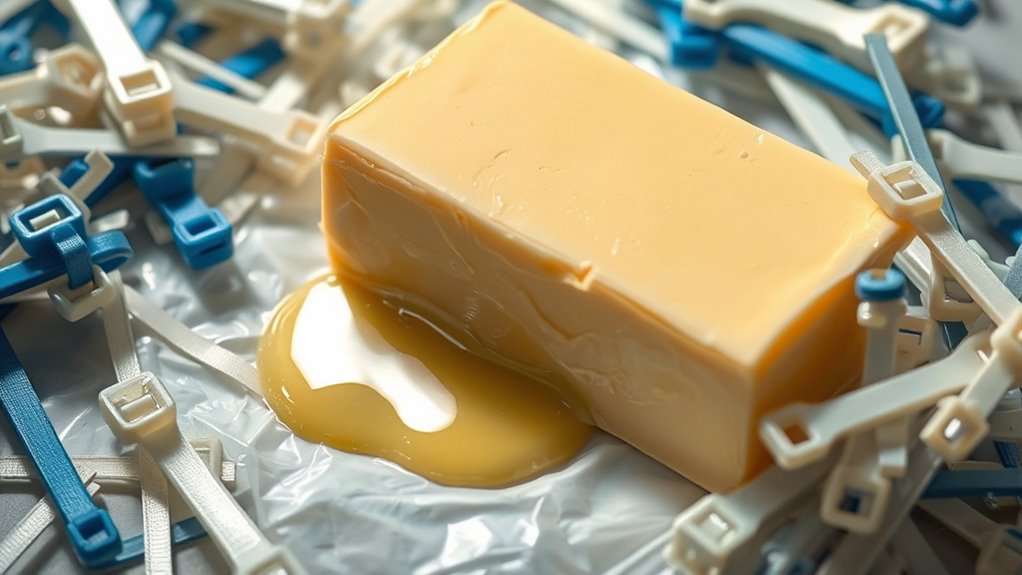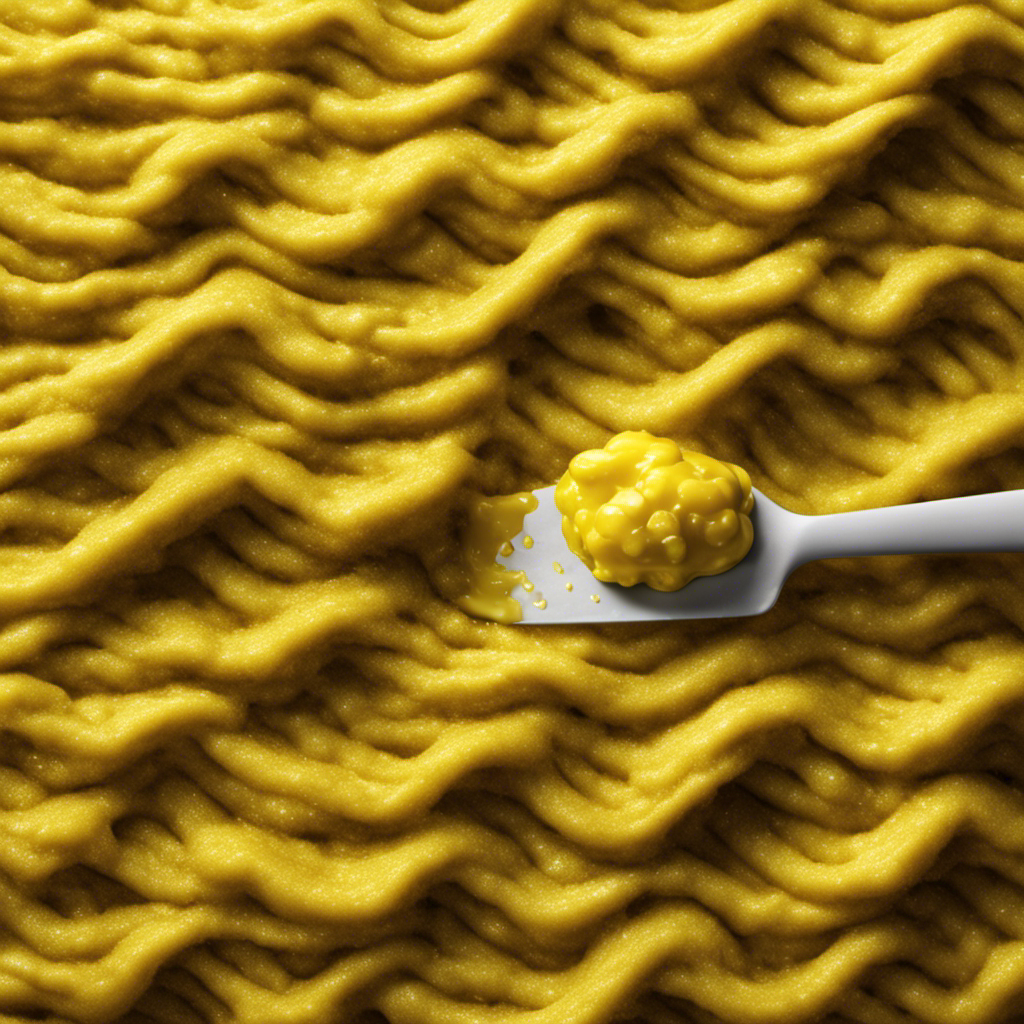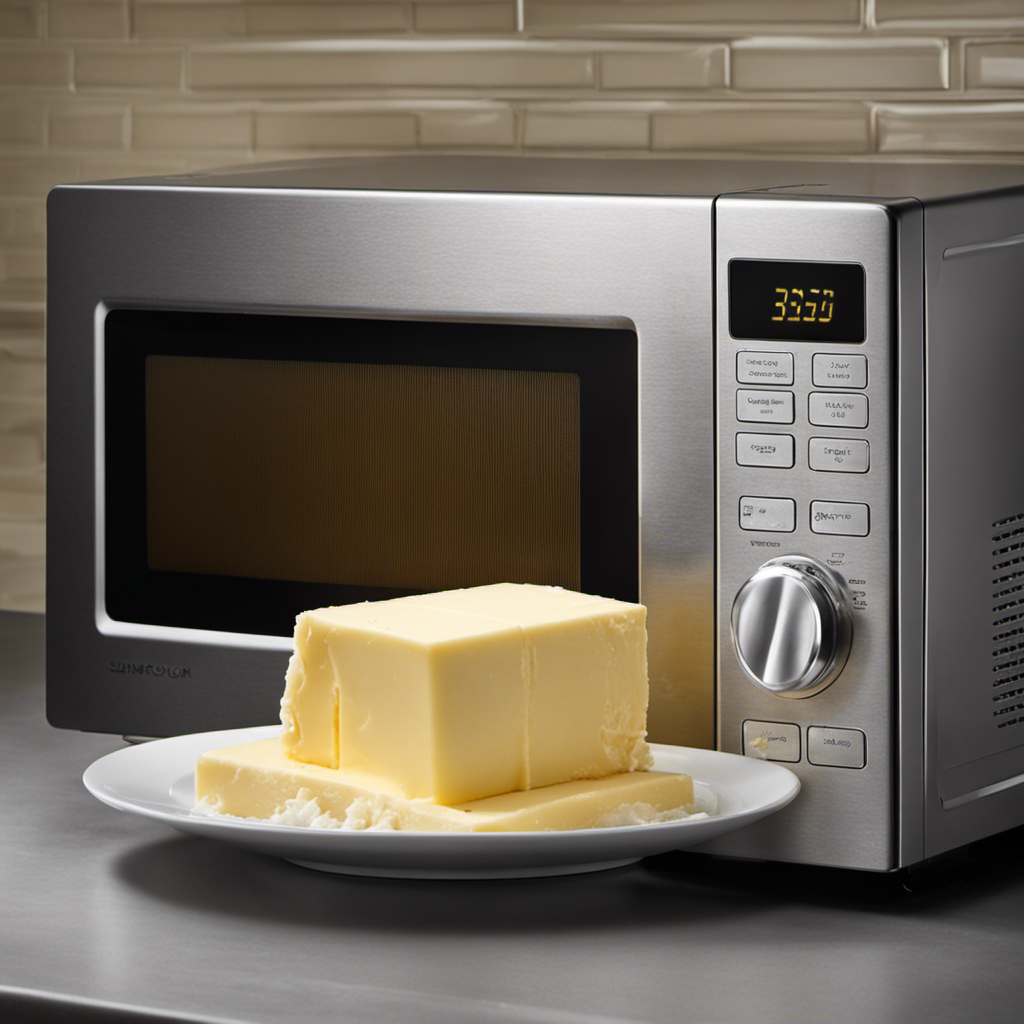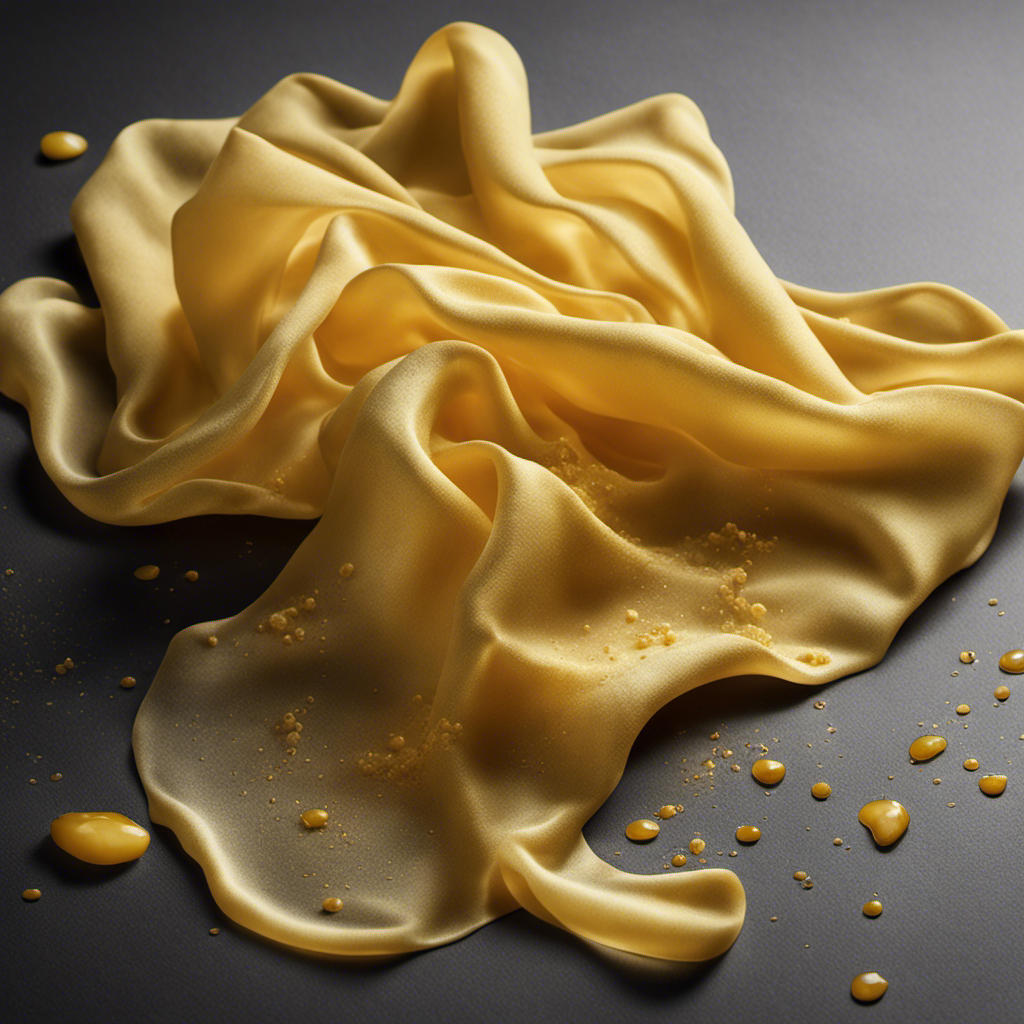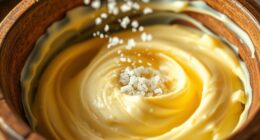Yes, butter can loosen zip ties and adhesives! The fat in butter helps break down adhesive bonds, making removal easier. Just apply it generously to the zip tie or adhesive and let it sit for a couple of minutes. Gently wiggle or pull it, and you’ll find it loosens with minimal effort. For tougher adhesives, you can mix melted butter with warm water for even better results. Want to learn some additional tips and techniques?
Key Takeaways
- Butter’s fat content helps break down adhesive components, loosening the grip of zip ties and adhesives.
- Applying butter generously to the area allows it to seep into adhesive bonds for easier removal.
- Letting butter sit for 1-2 minutes enhances its effectiveness in loosening stubborn fasteners.
- Combining melted butter with warm water can amplify the grease removal process for tougher adhesives.
- This method is versatile for removing labels, sticky residues, and can be useful in various sticky situations.
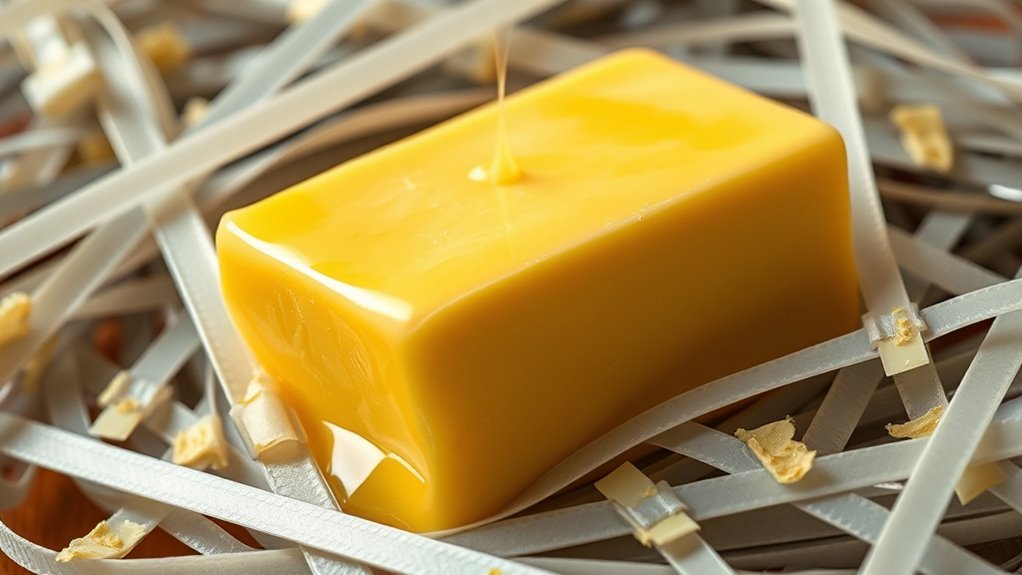
When you’re wrestling with stubborn zip ties or adhesives, a little butter can be your secret weapon. You might be skeptical, but the creamy, fatty goodness of butter has some surprising properties that help with grease removal and reducing adhesive strength. Instead of reaching for scissors or pliers, try this unconventional method to tackle those pesky fasteners.
To start, grab a stick of butter or a little container of it. Apply a generous amount to the area where the zip tie or adhesive is stuck. The fat in the butter works its magic by breaking down the components of the adhesive, making it easier to peel away. You’ll notice that the butter seeps into the adhesive, loosening its grip and allowing you to remove it more easily. This method can save you time and frustration, especially when you’re dealing with multiple ties or stubborn glue.
Apply butter to stubborn zip ties or adhesives to loosen their grip and simplify removal. It’s a time-saving and effective trick!
As you let the butter sit for a minute or two, it’s important to remember that the effectiveness of this technique depends on the adhesive strength of the product you’re working with. Some adhesives are tougher than others, but butter’s grease removal capabilities can often weaken their hold. After a brief waiting period, gently wiggle or pull at the zip tie or adhesive. You may find that it comes off with minimal effort, leaving no residue behind.
If you’re tackling larger adhesives or stubborn zip ties, consider combining butter with a little warm water. This can amplify the grease removal process, making it even easier to loosen up those adhesives. Simply mix melted butter with warm water and apply the solution to the affected area. The warmth can also help to break down the adhesive, leading to an even smoother removal process.
But remember, this trick isn’t just for zip ties or adhesives; it can also work wonders on other sticky situations. Whether you’re trying to remove labels or clean up sticky residue from surfaces, butter can be a versatile ally in your toolbox. Additionally, knowing how to maintain air purifiers can help keep your living space free from unwanted odors that may accompany adhesive usage.
Frequently Asked Questions
Can Butter Be Harmful to Certain Materials?
Yes, butter can be harmful to certain materials. When you apply it, you need to think about material compatibility. For instance, butter can break down some plastics or cause chemical reactions with certain fabrics, leading to stains or deterioration. If you’re using it around sensitive surfaces, you should test a small area first. Always be cautious, as what works well for one material might not be suitable for another.
What Are Alternative Methods to Loosen Zip Ties?
If you’re in a tight spot with zip ties, think of them as a puzzle waiting to be solved. You can use lubrication techniques like WD-40 or cooking oil to ease them apart. For tougher situations, consider chemical alternatives like acetone or vinegar, which can help weaken the material. Just remember, a little patience goes a long way when you’re trying to free something that’s been tightly secured!
Is Butter Effective on All Types of Adhesives?
Butter isn’t effective on all types of adhesives. It may work on some weaker adhesives due to its fats, which can disrupt chemical reactions. However, you should consider material compatibility; certain surfaces might not react well to butter and could get damaged. For stronger adhesives, you’ll likely need a specialized solvent. Always test a small area first to verify it won’t harm the material you’re working with.
Can I Use Margarine Instead of Butter?
You can definitely use margarine instead of butter! Think of it like trading a trusty old car for a newer model; they both get you where you want to go but might handle things a bit differently. When it comes to margarine substitution, it usually works well in recipes calling for butter, but keep in mind that butter vs. margarine can affect flavor and texture. Experiment and find what suits your taste best!
How Long Should I Wait for Butter to Work?
You should wait about 10 to 15 minutes for butter to work its magic. This timing allows the butter to penetrate and loosen whatever it’s meant to tackle. For effective results, employ some cooking techniques, like gently warming the butter first. It’ll help in those kitchen hacks you’re trying out. Just be patient; sometimes, a little waiting can lead to easier solutions, making your tasks in the kitchen much smoother.
Conclusion
So, you’ve gone from buttering your toast to buttering your zip ties and adhesives, huh? It’s ironic how a simple kitchen staple can turn out to be a makeshift tool for loosening stubborn binds. While you may not want to rely on butter for every sticky situation, it’s a reminder that sometimes the most unexpected solutions lie right in your fridge. Who knew your breakfast spread could double as a DIY problem solver? Just don’t expect it to fix your car!
